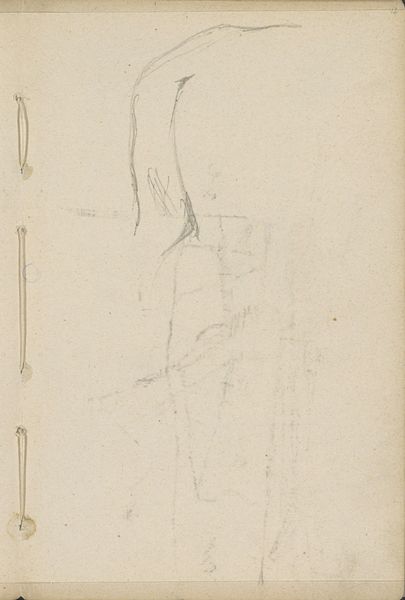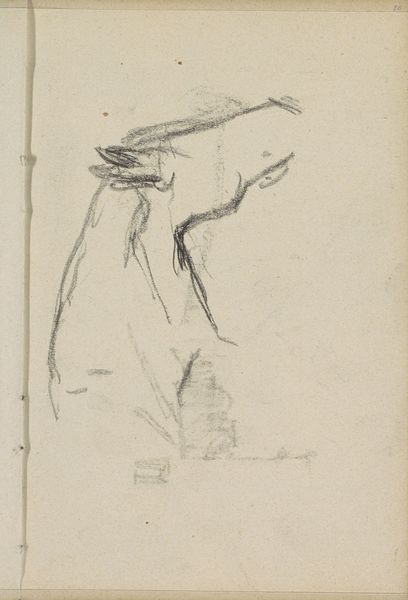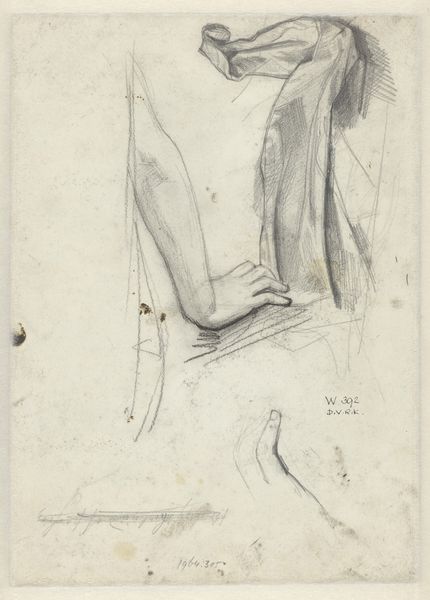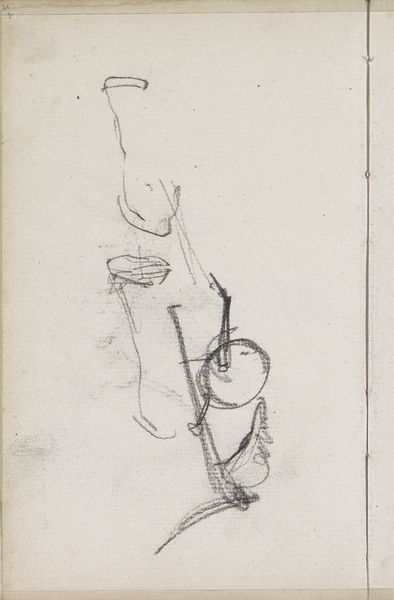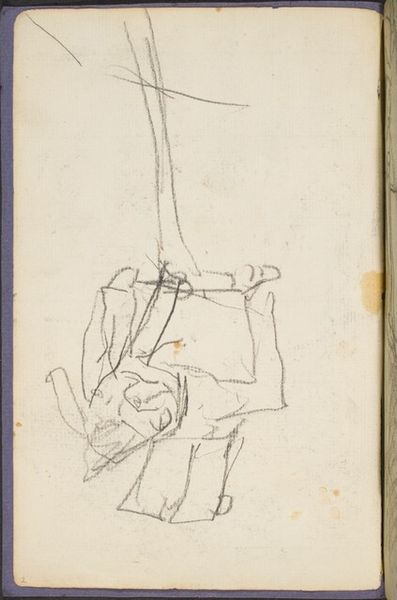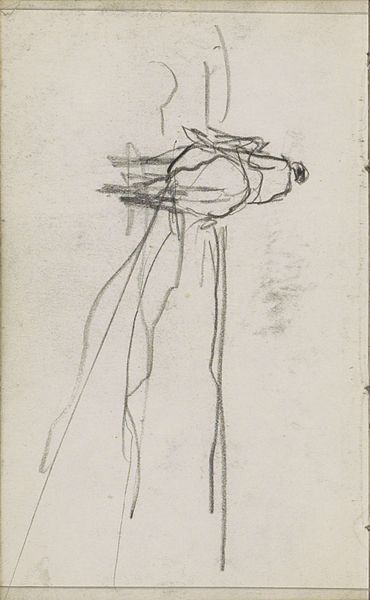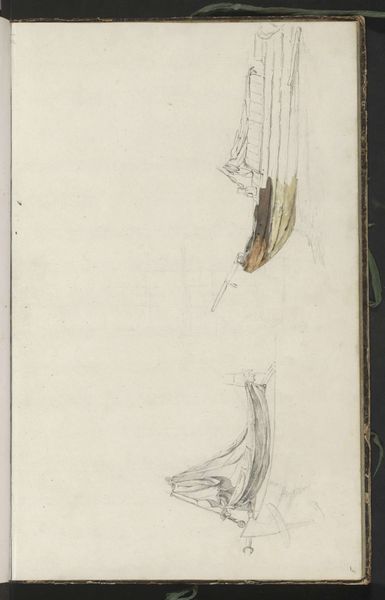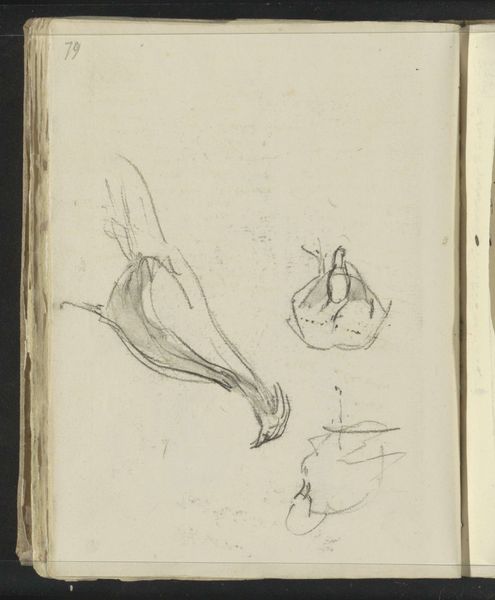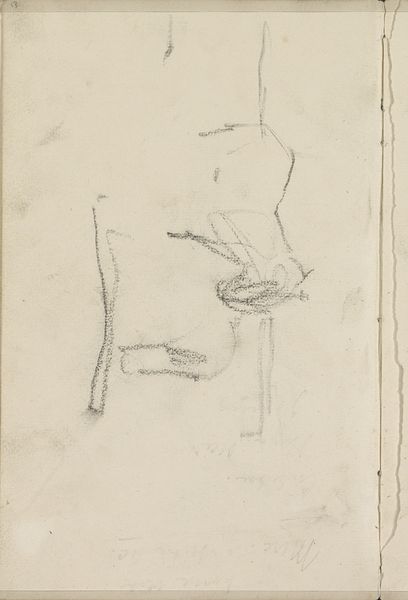
drawing, paper, pencil
#
drawing
#
amateur sketch
#
toned paper
#
quirky sketch
#
pen sketch
#
incomplete sketchy
#
figuration
#
paper
#
form
#
personal sketchbook
#
ink drawing experimentation
#
pen-ink sketch
#
pencil
#
sketchbook drawing
#
sketchbook art
Copyright: Rijks Museum: Open Domain
Curator: This piece is attributed to Floris Arntzenius, titled "Studies, mogelijk van dieren", dating roughly from 1883 to 1914. It appears to be a collection of sketches done in pencil and ink on paper. Editor: It gives the impression of fleeting observation. A snapshot of quickly captured forms, not striving for detail but focused more on a gestural understanding of the subject, whatever that may be. Curator: Precisely. The use of toned paper lends the drawing a certain warmth and immediacy, working in concert with the loose, almost frenetic linework. The sketches appear more like a collection of rapid notations aimed at grasping the essential form of the animals depicted. Editor: Given the material--a sketchbook--we should consider the labor and economic aspect. Cheap paper and readily available implements such as pens and pencils enabled sketches of ordinary subjects, creating accessibility that went against conventional themes expected of high art. These tools expanded access for many practitioners, as well. Curator: You raise an interesting point about accessibility. And I agree, Arntzenius’s choice of media subtly democratizes the artistic process, even as it harks back to academic traditions of studies and preparatory drawings. But it's worth observing the almost sculptural quality, even in its incompleteness. The forms possess a weight, a density, despite the economy of the lines. Editor: Yes, and the raw quality really allows the materiality of the artwork to shine. You can almost feel the grain of the paper, the flow of ink, and the graphite left by the pencil, engaging our tactile sense beyond the simple imagery. Curator: It's a testament to the artist's skillful handling of basic materials. Even within what some might dismiss as a mere "sketch," there is a sophisticated understanding of form, light, and shadow. Editor: This kind of personal art practice breaks barriers to making; it isn't only for refined or wealthy patrons. The social meaning comes through simply because these artworks document a shift from exclusive, polished art to including ordinary sketches as legitimate artworks in their own right. Curator: Yes, on closer examination, what appear as informal lines are carefully balanced and considered. Thank you for bringing forth its importance, indeed it does broaden the context from mere “studies.” Editor: A lot can be learned from things that appear everyday, once you think about who is able to produce what and how that production occurred in the past.
Comments
No comments
Be the first to comment and join the conversation on the ultimate creative platform.

